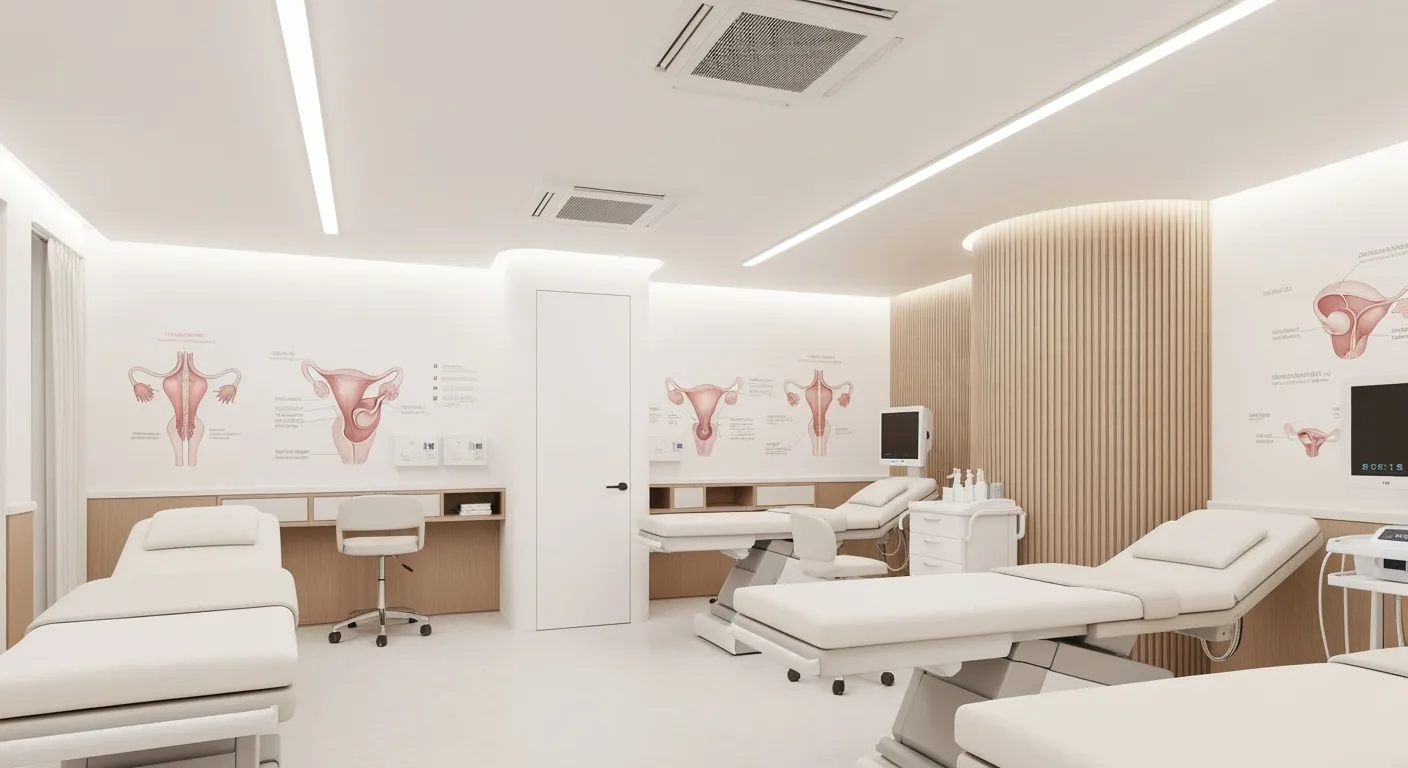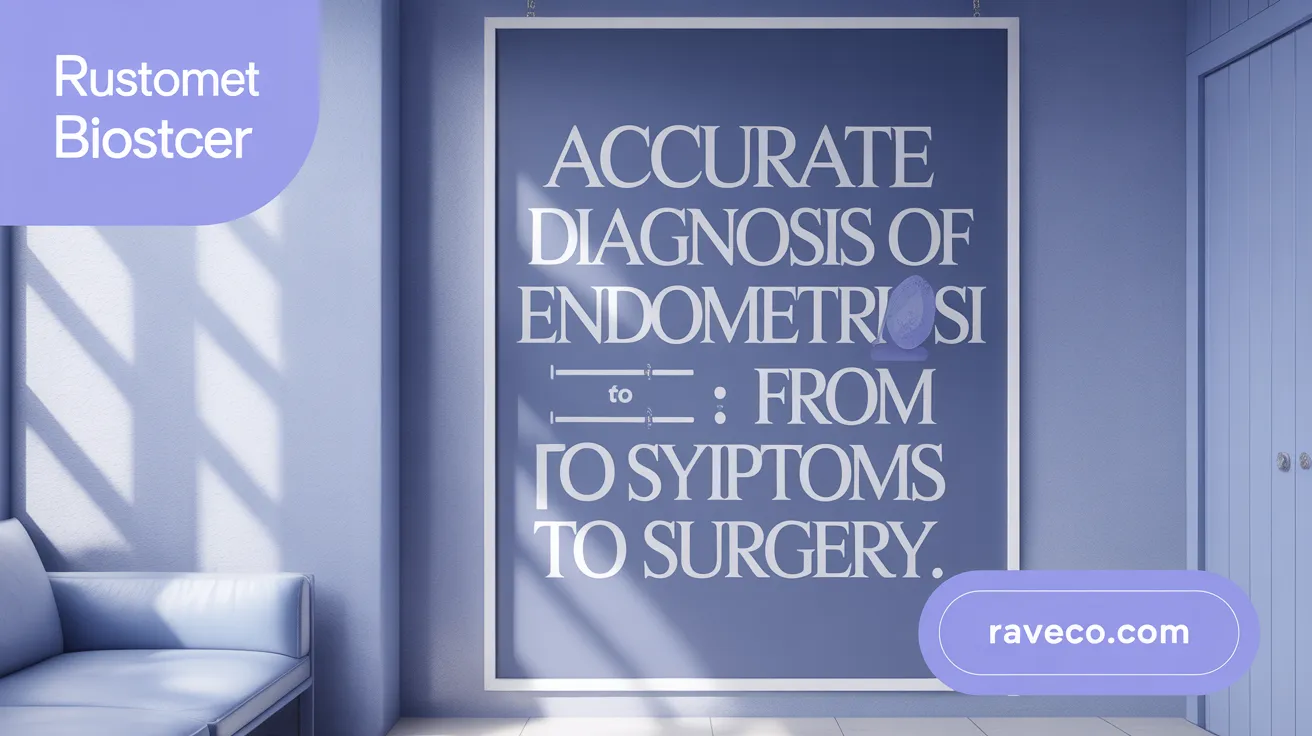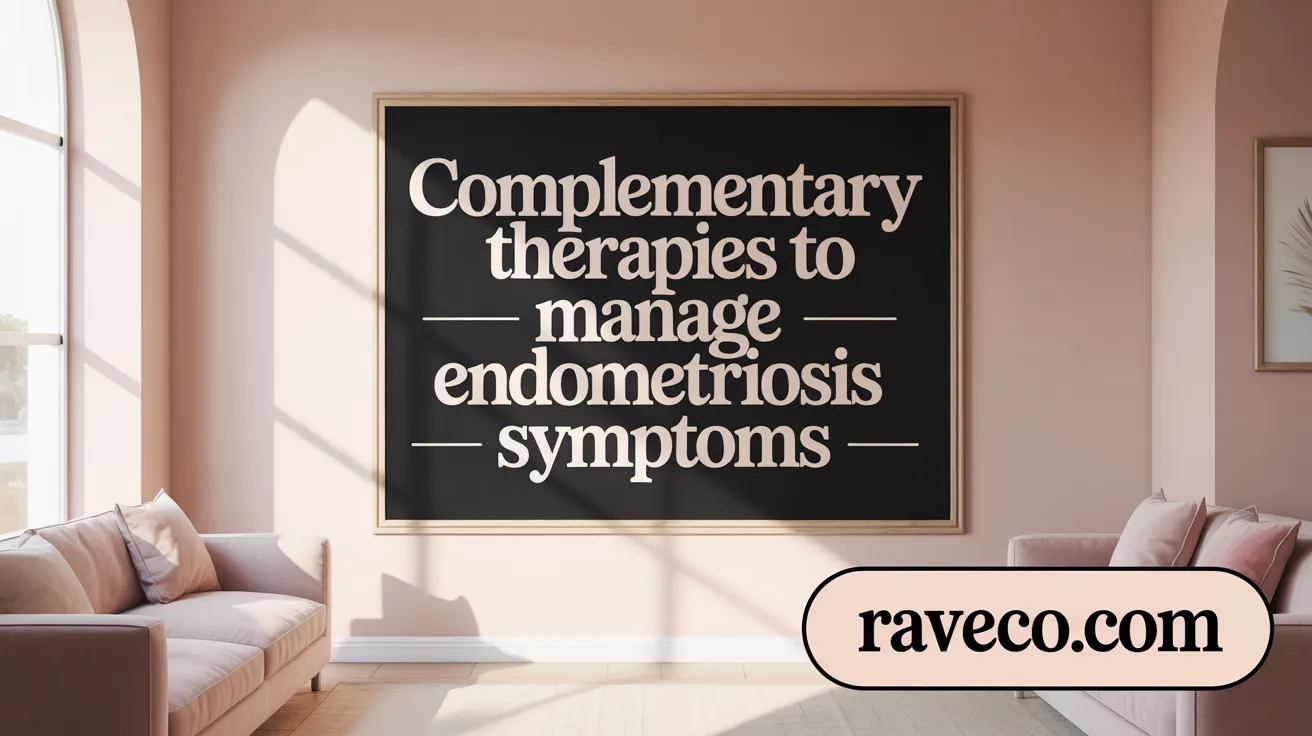Navigating Truths and Myths: Empowering Women in Birth Control Choices

Introduction to Endometriosis
Endometriosis is a chronic gynecological condition affecting approximately 10% of women and individuals with reproductive organs worldwide, characterized by the growth of tissue similar to the uterine lining outside the uterus. This condition leads to complex symptoms, often impacting physical, emotional, and reproductive health. Early recognition, accurate diagnosis, and tailored management are crucial for minimizing its profound effects on quality of life. This article systematically explores the symptoms, causes, diagnosis, treatment options, management strategies, and latest research developments surrounding endometriosis.
What is Endometriosis and Its Common Symptoms?

What is endometriosis and what are its common symptoms?
Endometriosis is a chronic condition affecting about 1 in 10 females worldwide, where tissue similar to the uterine lining grows outside the uterus. This aberrant tissue most often involves pelvic organs such as the ovaries, fallopian tubes, and the lining of the pelvic cavity, but can also be found in less common areas like the bladder, intestines, and even the lungs. The growth of this tissue causes inflammation, pain, scar tissue, and adhesions, which can disrupt normal organ function (Endometriosis overview, Understanding Endometriosis, Endometriosis causes).
Individuals with endometriosis may experience a wide range of symptoms. The most prominent and consistent complaint is severe pelvic pain, which often intensifies during menstrual periods but can also occur between cycles. Pain during or after sexual intercourse, known as dyspareunia, is also common. Some people suffer from heavy or irregular menstrual bleeding, while others may have bleeding between periods. Gastrointestinal symptoms such as diarrhea, constipation, bloating, nausea, and bowel or bladder pain are frequently reported. Infection, inflammation, and cyst formation, like endometriomas on the ovaries, contribute to these symptoms (Endometriosis symptoms, Painful menstrual cramps, Pelvic pain and endometriosis).
Importantly, the severity of symptoms does not necessarily correspond to the extent of tissue growth or disease stage. Many women with significant endometriotic lesions report mild symptoms, while others with minimal disease can experience debilitating pain (Endometriosis symptom variability, Endometriosis pain severity vs extent of lesions).
The impact of endometriosis extends beyond physical discomfort; it can significantly impair quality of life, affect emotional wellbeing, and interfere with daily activities. Infertility is a common complication, affecting up to 50% of women with the condition, due to scarring and blocking of reproductive pathways or damage to eggs and sperm (Infertility and endometriosis, Endometriosis and infertility).
In summary, endometriosis is a complex condition with a broad spectrum of symptoms that vary widely among individuals. Recognizing these symptoms early and seeking appropriate medical evaluation can help manage the condition effectively (Diagnosis of endometriosis, Managing endometriosis, Endometriosis diagnosis).
Etiology and Risk Factors of Endometriosis

What causes endometriosis and what are the known risk factors?
The precise origin of endometriosis is still not fully understood, which makes it a complex and intriguing condition. Researchers have proposed several theories to explain how it develops. One of the most widely accepted ideas involves retrograde menstruation, where menstrual blood and tissue flow backward through the fallopian tubes into the pelvic cavity instead of leaving the body. This ectopic tissue can then implant and grow on pelvic organs.
Besides retrograde menstruation, other potential causes include cellular transformation, where peritoneal or coelomic cells change into endometrial tissue, and the involvement of stem-like cells that might migrate and establish outside the uterus. Some theories also suggest immune system dysfunction, which hampers the body's ability to clear endometrial cells that have migrated outside the uterus.
Genetic factors significantly influence susceptibility. Women with a first-degree relative who has endometriosis are about 7 to 10 times more likely to develop it, indicating a hereditary component.
Various influences modulate the risk. Early menarche (before age 11), short menstrual cycles, and heavy or prolonged periods tend to increase risk because they expose the body to longer or more intense hormonal stimulation, promoting endometrial tissue growth outside the uterus. These hormonal factors primarily involve estrogen, which fuels the growth of endometrial-like tissue.
Conversely, certain factors might confer protection. Pregnancy and breastfeeding, which temporarily suppress ovulation and reduce hormonal fluctuations, may lower risk. Additionally, late menopause and having given birth can be protective by altering hormonal levels.
Other contributors include hormonal imbalances—particularly excess estrogen—surgical scars where endometrial cells might implant, and transport of these cells via blood or lymphatic routes.
In summary, endometriosis arises from an interplay of hormonal, genetic, immune, and environmental factors, and its risk profile is shaped by a combination of these influences. Ongoing research continues to explore these mechanisms to develop better preventative strategies and treatments. For more detailed information, see the comprehensive overview on Endometriosis causes and risk factors.
Understanding the Pathophysiology and Development of Endometriosis

What is known about the pathophysiology and development mechanisms of endometriosis?
The development of endometriosis is a complex process involving multiple biological mechanisms. At its core, the condition features the ectopic implantation and growth of tissue that resembles the lining of the uterus (endometrial tissue) outside the uterus itself. These ectopic lesions commonly occur within the pelvis, affecting organs such as the ovaries, fallopian tubes, and peritoneum, but can also be found in other regions like the diaphragm or even distant sites.
The most widely supported theory explaining its origin is retrograde menstruation. In this process, menstrual blood containing endometrial cells flows backward through the fallopian tubes into the pelvic cavity instead of leaving the body during menstruation. These cells then adhere to peritoneal surfaces, invade tissues, and establish lesions. However, this theory alone does not fully account for all cases, indicating that other mechanisms are involved (Endometriosis pathogenesis).
Local hormonal influences play a significant role in lesion development. Ectopic tissues tend to produce high levels of estrogen due to increased activity of enzymes like aromatase, which converts androgens into estrogen within the lesions (Hormonal effects in endometriosis). This leads to a self-sustaining cycle of lesion proliferation. Moreover, some women develop progesterone resistance, impairing the normal anti-proliferative effects of this hormone and allowing abnormal tissue growth (Hormonal therapies for endometriosis).
Immune dysregulation is another key factor. Normally, immune cells like natural killer (NK) cells and macrophages help eliminate misplaced or abnormal cells. In women with endometriosis, immune activity, particularly NK cell cytotoxicity, is often impaired, enabling ectopic tissues to evade destruction and persist (Immune system and endometriosis).
As the disease progresses, lesions undergo inflammation, characterized by the infiltration of immune cells and the release of inflammatory mediators such as prostaglandins. These mediators contribute to pain and further tissue damage (Endometriosis inflammation and pain). Angiogenesis, the formation of new blood vessels, supplies nutrients to growing lesions, facilitating their expansion (Endometriosis angiogenesis).
Over time, lesions may invade deeper tissues and develop nerve fibers, which amplify pain signals. Nerve growth and nerve involvement are significant contributors to the characteristic chronic pelvic pain seen in endometriosis (Endometriosis and nerve involvement).
Overall, the pathophysiology involves a combination of retrograde dissemination, local hormonal alterations, immune evasion, inflammation, and nerve involvement, all contributing to the disease's development and symptoms (Understanding endometriosis pathophysiology).
Diagnostic Approaches: From Clinical Signs to Surgical Confirmation

Diagnosing endometriosis involves a step-by-step assessment starting with symptom evaluation and physical examination. Healthcare providers typically begin with a thorough medical history, asking about pelvic pain, menstrual irregularities, pain during sex, bowel movements, or urination, and any fertility issues. During the physical exam, tender areas, nodules, or scars may be identified, although these signs are not always present.
Imaging modalities play a crucial role in supporting diagnosis. Transvaginal ultrasound is commonly used initially to detect ovarian cysts called endometriomas and other pelvic abnormalities. Magnetic resonance imaging (MRI) offers more detailed images, especially helpful for deep infiltrating endometriosis involving organs like the bowel or bladder. However, these imaging tools have limitations—they often miss superficial or small lesions and cannot reliably confirm the presence of endometrial implants.
The definitive method for diagnosing endometriosis remains laparoscopy. This surgical procedure involves inserting a small camera through tiny incisions in the abdomen to directly visualize pelvic organs. During laparoscopy, the surgeon can identify characteristic endometrial implants, adhesions, and cysts. Because visual inspection can sometimes be unreliable, tissue samples (biopsies) are collected during the procedure for histopathological confirmation, which looks for typical features like endometrial glands and stroma.
Emerging non-invasive diagnostic tools are in development, including gene-based classifiers and biomarkers, which aim to detect molecular signatures associated with endometriosis. These innovations have the potential to reduce reliance on surgical diagnosis in the future.
In summary, while clinical evaluation and imaging help guide suspicion, laparoscopy with biopsy remains the gold standard for confirming endometriosis. Advances in less invasive testing hold promise for earlier and more accessible diagnosis, improving management and quality of life for affected women.
Classification and Staging of Endometriosis

What are the stages of endometriosis and how do they impact treatment options?
Endometriosis is classified into four distinct stages—Stage I (minimal), Stage II (mild), Stage III (moderate), and Stage IV (severe)—based on the extent, depth, and location of endometrial-like tissue lesions within the pelvis, as well as the presence and severity of adhesions. The widely used American Society for Reproductive Medicine (ASRM) staging system assigns scores to different lesion types, sites, and adhesions to determine the stage.
Stage I involves small, superficial superficial implants on pelvic surfaces with minimal or no scar tissue. As the stages progress, the lesions tend to become larger, deeper, and involve more complex structures. For example, Stage IV is marked by extensive deep infiltrating lesions, large ovarian endometriomas (cystic ovarian endometriosis), thick adhesions, and significant distortion of pelvic anatomy.
Interestingly, the classification into these stages does not always match the severity of symptoms; some women with advanced Stage IV disease experience mild symptoms, while others with early-stage disease may suffer intense pain.
Understanding the stage helps guide treatment choices. Milder stages may often be managed effectively with hormonal medications that suppress endometrial proliferation. More advanced disease, especially Stage III and IV, often requires surgical management to excise or ablate lesions, remove cysts, and lyse adhesions.
Deep infiltrating endometriosis (DIE), frequently associated with higher stages, involves structures like the bowel, bladder, or pelvic walls. The involvement of these external organs demands specialized surgical approaches, sometimes involving multidisciplinary surgical teams.
Overall, the staging system provides a framework not only for prognosis but also for tailoring treatment strategies to the disease’s severity and the patient's reproductive and symptom management goals.
| Stage | Description | Lesion Characteristics | Common Involvement | Treatment Implications |
|---|---|---|---|---|
| I | Minimal | Small, superficial lesions | Limited surface implants | Medical management often sufficient |
| II | Mild | Slightly larger or deeper lesions | Slight adhesions | Conservative surgery or hormonal therapy |
| III | Moderate | Ovarian cysts (endometriomas), deeper lesions | Uterus, ovaries, peritoneum | Surgical excision, cyst removal |
| IV | Severe | Extensive deep infiltrating lesions, large endometriomas | Bowel, bladder, major adhesions | Complex surgical procedures, organ-specific interventions |
For more detailed insights, search: "Endometriosis staging and treatment implications".
Medical and Surgical Treatment Modalities

What medical and surgical treatments are available for managing endometriosis?
Managing endometriosis involves a combination of medical and surgical options aimed at reducing symptoms and improving fertility prospects. Medical treatments primarily focus on hormonal therapies that suppress ovarian function and decrease estrogen levels, which in turn reduce the growth and activity of endometrial lesions. These include combined oral contraceptives, progestins such as dienogest, GnRH agonists like leuprolide acetate and elagolix, and aromatase inhibitors such as letrozole. These therapies help alleviate pain, diminish lesion size, and prevent new tissue proliferation.
Pain management often involves NSAIDs like ibuprofen and naproxen, which can provide relief, especially during menstrual flares. However, their effectiveness is somewhat limited in endometriosis, and they do not address the underlying tissue growth.
When medication does not sufficiently control symptoms or fertility is a concern, surgery becomes a key treatment modality. The standard surgical approach is laparoscopy, a minimally invasive procedure that allows direct visualization of endometrial tissue, ovarian cysts (endometriomas), and adhesions. Surgeons can excise or ablate endometriotic lesions, repair damaged organs, and remove cysts to relieve pain and improve chances of conception. In more severe or refractory cases, a hysterectomy with or without removal of the ovaries may be considered, though this approach eliminates reproductive capacity and induces menopause.
Postoperative management plays an important role in long-term symptom control. Hormonal therapy is often recommended after surgery to suppress residual or recurrent endometrial tissue. For women wishing to conceive, surgery combined with assisted reproductive technologies such as in-vitro fertilization (IVF) offers the best chances of pregnancy.
Overall, treatment plans are tailored to each individual, based on symptom severity, age, fertility desires, and the extent of disease.
More information
Search query: Medical and surgical treatments in endometriosis
This comprehensive approach ensures that women receive personalized care aimed at symptom relief, fertility preservation, and improved quality of life.
Alternative and Complementary Therapies for Symptom Relief

Many women with endometriosis turn to alternative and complementary treatments to help manage their symptoms and improve quality of life. Approaches like acupuncture, herbal medicine, physical therapies, and dietary modifications are popular choices.
Acupuncture has shown promise in reducing pelvic pain and promoting relaxation of tense muscles, which may help alleviate discomfort related to endometriosis. Some women find relief through herbal medicines, such as traditional Chinese decoctions like Xuefu Zhuyu, which research suggests can significantly ease symptoms and reduce endometriotic lesions.
Dietary strategies focused on anti-inflammatory effects are also beneficial. Diets rich in vegetables, fruits, omega-3 fatty acids, and antioxidants, like the Mediterranean diet, may decrease systemic inflammation. Conversely, reducing intake of processed foods, red meat, caffeine, and alcohol can help lessen gastrointestinal symptoms and overall inflammation.
Physical therapies, including pelvic floor physiotherapy and gentle exercises like yoga, help relax pelvic muscles, improve blood flow, and reduce stress. Psychological interventions such as mindfulness, cognitive-behavioral therapy (CBT), and stress management techniques can also support emotional well-being.
While these therapies can be valuable, current evidence varies. Acupuncture has demonstrated potential in pain reduction, but more rigorous clinical trials are needed. Herbal medicines show promise but require further validation through scientific studies to confirm safety and efficacy.
It’s important to view these modalities as complementary to conventional treatments like medications or surgery. Integrating lifestyle changes with medical management can provide a holistic approach to symptom relief. Women should always consult healthcare professionals before starting any new therapy to ensure compatibility with their overall treatment plan and to avoid adverse interactions.
Managing Endometriosis: Lifestyle and Supportive Strategies

Individuals living with endometriosis can significantly improve their quality of life by adopting a holistic approach that combines medical treatments with lifestyle adjustments and emotional support. Pain management begins with medications such as NSAIDs (nonsteroidal anti-inflammatory drugs), which can help reduce inflammation and alleviate menstrual pain. Hormonal therapies, including birth control pills or GnRH analogs, aim to suppress endometrial tissue growth and cyclical pain; surgical options like laparoscopy may also be used to remove or destroy endometriotic lesions.
Beyond medication and surgery, lifestyle changes play a vital role. Maintaining a healthy diet rich in omega-3 fatty acids—found in fatty fish, walnuts, and flaxseeds—and foods high in antioxidants, such as fruits, vegetables, and whole grains, may help diminish inflammation. Regular low-impact exercise, including walking, swimming, or yoga, can boost blood flow, release endorphins, and reduce pain and stress.
Stress reduction techniques are equally important. Mindfulness meditation, cognitive-behavioral therapy (CBT), and relaxation exercises can help manage the emotional toll of chronic symptoms. Support from mental health professionals, support groups, and counseling can assist in coping with feelings of frustration, anxiety, or depression that often accompany endometriosis.
Supporting pelvic health through therapies like physiotherapy and heat application (heating pads or hot baths) can provide additional symptom relief. Good sleep hygiene and staying well-hydrated further enhance wellbeing.
A multidisciplinary care plan involving healthcare providers, physical therapists, dietitians, and mental health specialists ensures comprehensive management. Combining medical intervention with lifestyle modifications and emotional support helps individuals with endometriosis live well, maintain daily activities, and improve overall resilience against the disease’s challenges.
More information about living with endometriosis management strategies can be found by searching online using the phrase "Living with endometriosis management strategies". Overall, staying proactive and engaged in a personalized care approach is essential for managing symptoms and fostering a better quality of life.
Prognosis and Long-Term Health Outcomes

Endometriosis can have profound effects on long-term health, particularly regarding fertility and overall well-being. Many women experience difficulties conceiving, as the condition often causes scarring, adhesions, and damage to reproductive organs, which can interfere with egg release and fallopian tube function. While pregnancy is still possible for many women, infertility is a common complication, and in some cases, assisted reproductive technologies like IVF may be needed.
Beyond reproductive issues, endometriosis has been associated with an increased risk of certain health conditions, including ovarian cancer, although this risk remains relatively low. The chronic inflammation characteristic of endometriosis is also linked to other systemic health issues, such as autoimmune diseases and cardiovascular problems like hypertension and atherosclerosis. This persistent inflammatory state may contribute to higher rates of metabolic and cardiovascular conditions, affecting overall longevity.
Psychologically, living with endometriosis can lead to ongoing mental health challenges. The chronic pain, fatigue, and fertility concerns often cause anxiety, depression, and emotional distress. Additionally, recurrent symptoms and the unpredictable nature of flare-ups can diminish quality of life and social functioning.
Despite advances in diagnosis and treatment options, endometriosis remains a progressive condition for many. Early detection and continuous management are vital in mitigating symptoms and preventing disease progression. While hormone therapies and surgical interventions can control pain and improve fertility outcomes, symptoms may recur, necessitating long-term and sometimes multidisciplinary approaches to care.
Overall, the prognosis and long-term health outlook for women with endometriosis depend heavily on timely diagnosis and comprehensive management to address both physical symptoms and associated health risks. Continued research aims to better understand the disease’s systemic effects, with the goal of improving long-term health outcomes and quality of life for those affected.
Emerging Research and Future Directions

The field of endometriosis research is rapidly advancing, with recent developments pointing toward more precise, personalized, and less invasive approaches to diagnosis of endometriosis and endometriosis treatment options.
One of the most promising areas is the development of non-invasive diagnostic tools. Efforts are underway to create reliable blood tests, such as liquid biopsies detecting circulating endometrial cells or molecular markers, as well as advanced imaging techniques for endometriosis that can identify endometriotic lesions without the need for laparoscopy. These innovations aim to facilitate earlier diagnosis of endometriosis, reduce diagnostic delays, and enable timely intervention.
Revolutionizing treatment options for endometriosis is another major focus. Researchers are exploring personalized medicine approaches that tailor therapies based on individual genetic, molecular, and epigenetic profiles. Biomarkers like specific gene expressions, hormonal receptor subtypes, and immune signatures are being studied to identify which patients are likely to benefit from particular medications.
In the realm of pharmacotherapy, new drugs are in development, including GnRH antagonists with fewer side effects, aromatase inhibitors, and immune-modulating agents. Mitochondrial-targeted therapies, such as dichloroacetate, are being investigated for their potential to address cellular metabolic dysfunctions involved in endometriosis.
Surgical technology has also seen significant innovations. Robotic-assisted laparoscopic surgeries offer enhanced precision, reduced trauma, and improved visualization. Fluorescence-guided procedures help delineate endometriotic tissue more accurately, enabling complete excision while preserving healthy tissue, thus improving symptom relief and fertility outcomes.
Emerging research has also shed light on the role of the gut microbiome and the gut–microbiota–brain axis in endometriosis. Modulating the microbiome through probiotics, antibiotics, or dietary interventions could reduce inflammation and pain, representing a novel therapeutic avenue.
Looking forward, the integration of these multidisciplinary insights is expected to usher in a new era of individualized care. The goal is to provide women with endometriosis more effective, less invasive, and sustainable management of endometriosis, ultimately improving quality of life with endometriosis.
Conclusion: Empowering Through Knowledge and Care
Endometriosis is a complex, multifaceted condition that affects millions worldwide, often with profound physical and emotional consequences. Comprehensive understanding of its symptoms, causes, and diagnostic challenges equips patients and healthcare providers with the tools necessary for timely intervention and effective management. Advances in medical and surgical treatments, complemented by lifestyle adaptations and emerging research, offer hope for improved symptom control and quality of life. Ultimately, fostering awareness, personalized care, and multidisciplinary support remains essential for empowering individuals living with endometriosis toward better health outcomes and overall well-being.





.png)